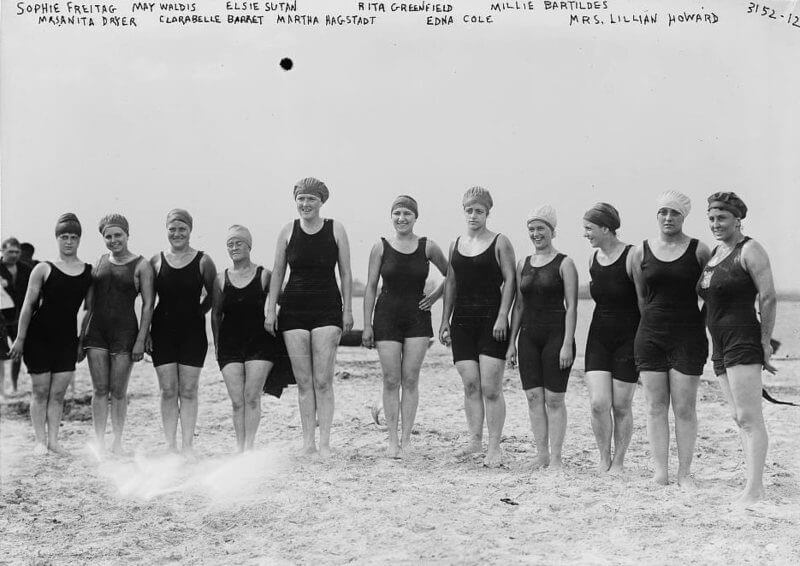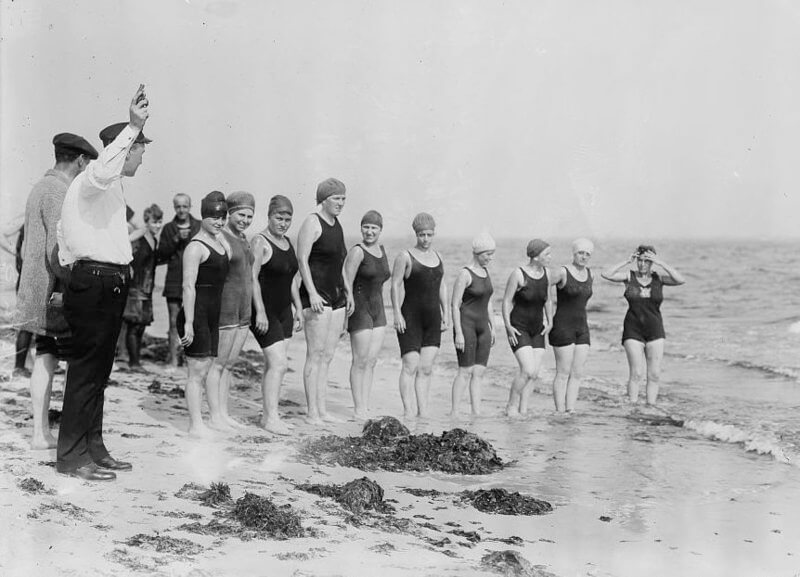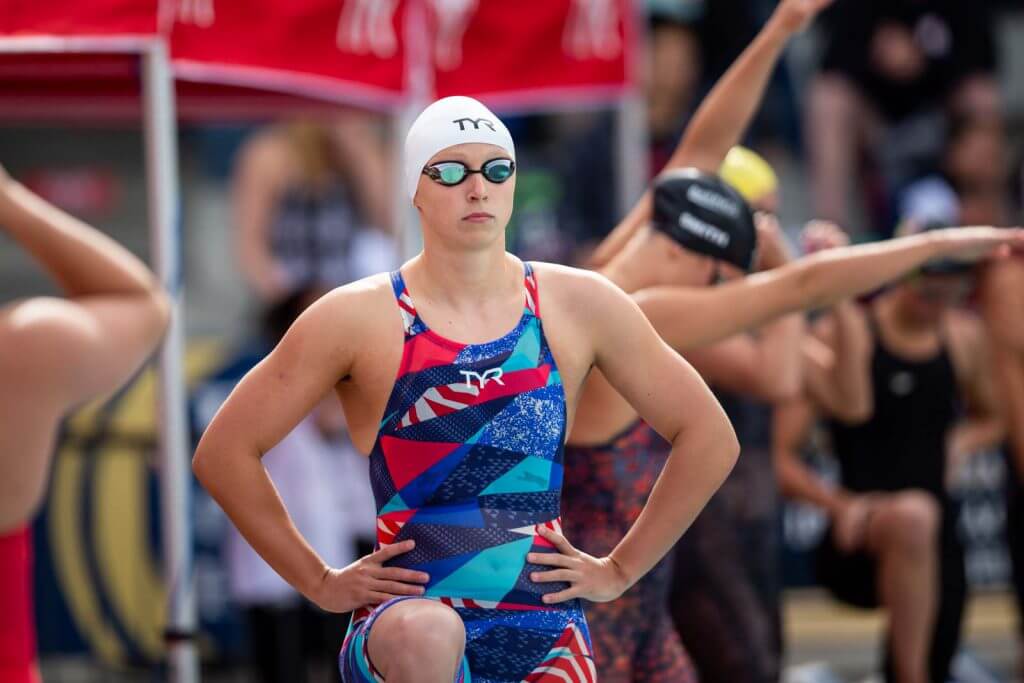The Evolution of Women’s Swimming: From Then to Now

The Evolution of Women’s Swimming: From Then to Now
By McKenna Ehrmantraut, Swimming World College Intern.
Women have fought for equal rights throughout history, but the first major spark of women’s suffrage in America began during the 1920s. Women’s suffrage is often focused on women’s right to vote, but a lesser known fact is that while women pushed for voting rights, they also fought for equality in physical activities such as swimming. They believed that by showing their athletic side and fighting for more equal clothing options, they would further help the fight for equality.
The first two women’s swimming groups were the National Women’s Life-Saving League and the Women’s Swimming Association. The two groups held small swim competitions such as open water swimming to “rescue” a dummy in the water. The fight for women to compete in swimming events did not entirely revolve around the physical aspects of the sport, though. Another challenge facing women at the time was what was considered “acceptable” clothing for women in public. They were required to be covered from head to toe in the water and were forced to wear stockings, a skirt and shoes into the water while swimming. The clothes were often made of heavy wool, making it harder for women to swim fast.

In the early 1900s, Annette Kellerman (the Australian Mermaid) made a suit that revealed the lower half of her legs, much like today’s knee skins in terms of shape, though they were much baggier. Most people had trouble accepting the fact that women were becoming more comfortable exposing their bodies, but the swimmers kept pushing. They even began to protest. The women wanted to create a floating procession of boats on the Serpentine, a lake in London’s Hyde Park, in support of their cause. They were denied permission and turned to protest. They wore dark robes that spelled out suffrage and then took off their robes to reveal simple one-piece swimsuits. Then, they jumped on to their boats. While they failed to sail them around, they created a spark.
Women were first allowed to participate in the Olympics in 1912 (men began competing in what we would consider the modern day Olympics in 1896), but American women were not eligible to swim until the Olympics of 1920 in Antwerp, Belgium, due to the long skirt rule in the 1910s which required women to wear full length skirts and show no leg. The only events swum by women at the time were the 100m free, 300m free, and 4x100m free relay. Besides the lack of events, there was also a lack of lane lines, flag zones, timing systems, and blocks. 1924 was the first year the pools developed lane lines (which were made of cork) and lines on the bottom of the pool to keep the swimmers from running into each other.

During this transitional period, what women wore was usually more important than their training. It was frowned upon at the time for women to reveal any skin, so wearing shorter swim suits or skin tight suits was often forbidden. Besides the struggle to cut through the water (think of how hard T-shirt races are), women were also struggling to maintain a consistent training regimen due to taking a week off of training each month during their period. Swimming is a sport that requires dedication to become great, and it wasn’t until 20 years after being assimilated into Olympic competition that women began swimming year-round without constant breaks due to the invention of tampons.
Women’s times have significantly improved over the past 100 years with the improvement of pools, timing systems, blocks, lane lines, and of course – swim suits. The swim suits slowly evolved from the wooly, full length coverage to baggy knee skins, to normal one pieces with thick material and covered backs, to slightly opened backs, to a thinner material with a higher waist, and then progressed to the suits swimmers today have grown up with – from the now banned ankle length tech suit to the printed knee skins worn in today’s Olympics.

The next time your coach makes you swim in tennis shoes or T-shirts, take a moment to reflect on those groundbreaking women who broke into competitive swimming more than 100 years ago in their wool dresses!
All commentaries are the opinion of the author and do not necessarily reflect the views of Swimming World Magazine nor its staff.




Wonderful to see coverage on the progress of women in competitive swimming!
You failed to mention women’s suits had to have a tiny skirt into the 1960’s. Also coverage of the silk suits and discussion of the 20 yard pools would have been nice.
Ester Williams stared as Australian swimming star Annette Kellerman in Million Dollar Mermaid.
Ester boosted swimming in the USA.
No such reference in the 1960 rule book. You might be thinking of the Pacific Style suit which did have a very short skirt – this was the 1930’s
We have come a long way but still a very long way to go. And it would certainly be nice to see equality making an appearance in the composition of the Bureaux and committees of FINA, LEN and some other federations. https://swimgov.wordpress.com/you-cant-forget-your-past/
The old English for both sexes was “Mann”. Everyone was a “Human” and, there was equally in England before 1066.
Thomas Hestla Toyan Chino
My first nylon suit had a privacy panel that allowed air to come in and bubble up but our private parts were protected. Female divers in the 50s and early 60s wore suits that zipped up the back.
Not a fatty among those ladies!!!!